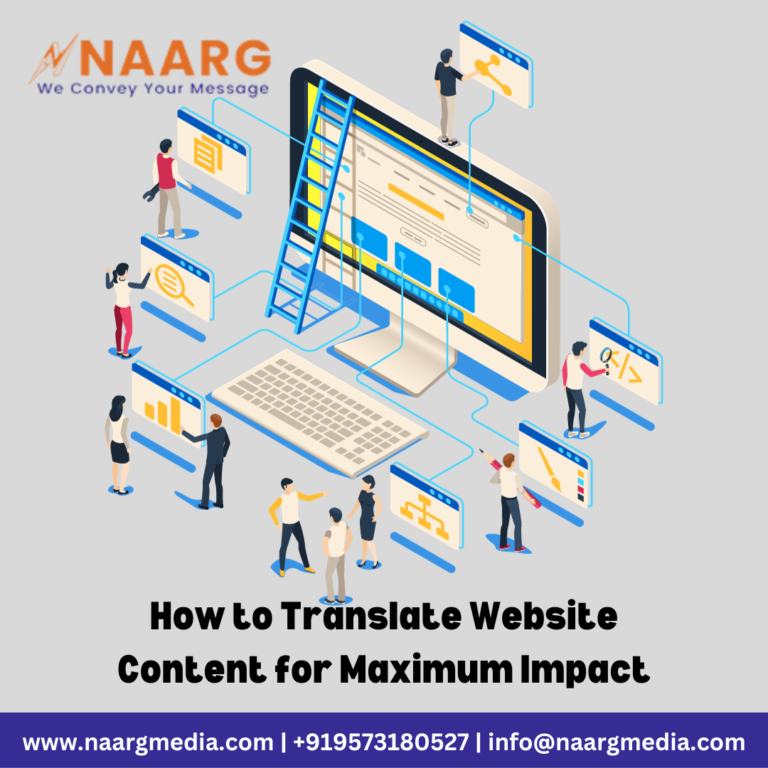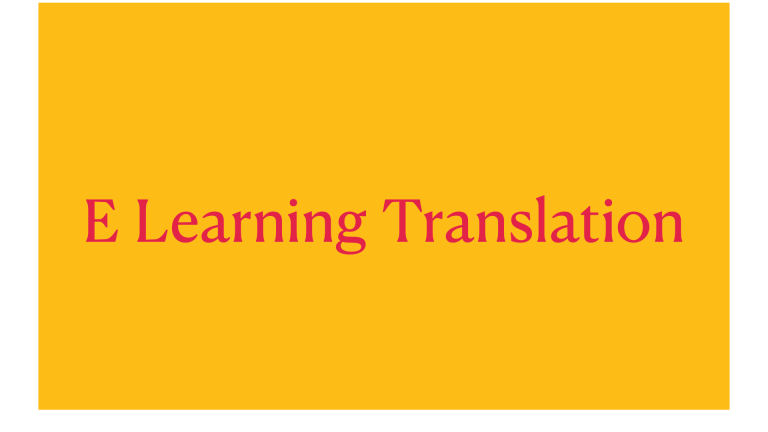Are you looking to expand your global reach? Then, translation of your website content might be the answer for you to get maximum impact. Translating your website content into multiple languages has been one of the most effective ways to expand your online presence.
Since only 25% of internet users use English as their source language. The need to translate website content becomes even more essential. However, the road to translating your website content into multiple languages is not that easy.
In this blog post, we will tell you about the importance of website content translation. What are the key factors that you should consider while translating website content? And the most essential question: how to translate website content?
So, let’s get started.

The importance of website content translation
Why has website content translation become so important? Translating your website content not only breaks down language barriers but also demonstrates your commitment to inclusivity and respect for other cultures. Website content translation has become a powerful tool to expand your customer base, tap into new markets, and enhance your business reputation on a global scale.
Translating your website increases user engagement because, according to statistics, 25% of internet users know English. Although English is the dominant language, Chinese is the second most popular language, accounting for a little over 19% of web content. And the rest of the eight languages make up to 24% of web content. That is a vast figure to ignore. Right?
One classic example of website content translation is the Amazon shopping app. When you open the Amazon shopping app, there is a dialogue box to select different languages, countries, or regions. Since Amazon is a mega-giant of e-commerce, why would it require running the app in multiple languages?
Because Amazon understands that translating your website into numerous languages will help them tap into a vast customer base, they will witness exponential growth in sales. And they were right; it not only boosted their sales but also allowed them to offer a more personalized shopping experience to customers worldwide.
Key factors to consider before translating website content
Now that you know the importance of website translation. The next step is determining the factors you have to consider before translating website content. Here, we have listed a few factors to take into consideration before translating website content.
1. Search Engine Optimization (SEO)
When your web content gets created in the original language, you must have paid attention to keywords that helped improve your SEO. The same is true when you translate your website content into multiple languages. Here also, you should research local keywords. You simply cannot ignore SEO when you translate your website.
Optimizing your search engine is essential if you want your website to rank highly and increase its visibility. To optimize the search engine, you must conduct keyword research in the target language. You must adapt your original content for search engines in the target language.
2. Multiple language intricacies
Translating website content in a different language pair often involves emotions and understanding a particular culture and their native language. No doubt machine translation has improved significantly over the years, but it is still behind human translation. And when we talk about the translation of website content it is not meant to be a word-to-word translation. Because it can turn out to be mistranslated content.
A hilarious example of literal translation is when Pepsi translated its slogan ‘Come Alive with Pepsi’ to ‘Pepsi brings your ancestors back from the dead’ in Chinese. You need to adapt the target language rather than just translating it word-for-word. And this is where a website translator comes in use.
3. Appearance and user experience
When you translate your website content it is essential to know how it looks in the target region. Is it following all the guidelines of the target region? Since you are translating a website in the native language of the target audience, it is essential to look for images and designs that are appropriate for the target audience. Also, it is best to test the user experience of the target language version of your website.
To ensure that it is easy to use and the navigation, design, and functionality are working seamlessly for all users. Because when you translate your website into foreign languages, there might be some formatting issues. Some phrases are longer in one language than another. It is essential to be mindful of widgets and images of webpages when translating, as they require a precise number of characters to fit in the alignment.
How to translate a website’s content?
Now the most essential question: How do you translate a website’s content? You must be wondering what it takes to translate website content into the target language. Don’t worry, we have listed the steps that are required to translate a website’s content.
1. Get the original copy
Before you start translating your website content, like web pages and images, you need to have the original copy that is ready to be translated. Make sure that the original copy is error-free because once you start the translation and website localization process.
It will be difficult to make changes and will prolong the process further. Having the original copy of the website will help you get a grasp of the website content and make the translation job a little easier.
2. Translate and localize website content
Now the next step is to translate the content of your web page into the target language. You need to translate all kinds of texts that appear on the website, as well as images. And for this, you will require experts like website translators or a professional translation agency.
Translating your website also comes with the step of localization. Localizing your website has also become essential. Some website content requires linguistic and cultural nuances that only experts can handle. They will help localize the grammatical nuances, puns, currencies, and culture-specific items.
3. Including multilingual SEO
When you are taking that extra step to localize your website, you want it to perform well and rank well in local search engines. And for that, you will need to optimize your website content according to the best SEO practices. The ultimate goal is to make your website visible and accessible in the native language.
Translating your website into multiple languages is a complex process that requires attention to detail and proper analysis. And that is why professional website translation service is so essential—after all, your website is the face and a digital business card for your business.
Do you require a translation and localization service for your company’s website? If so, don’t wait to get in touch with us. Contact us today.

